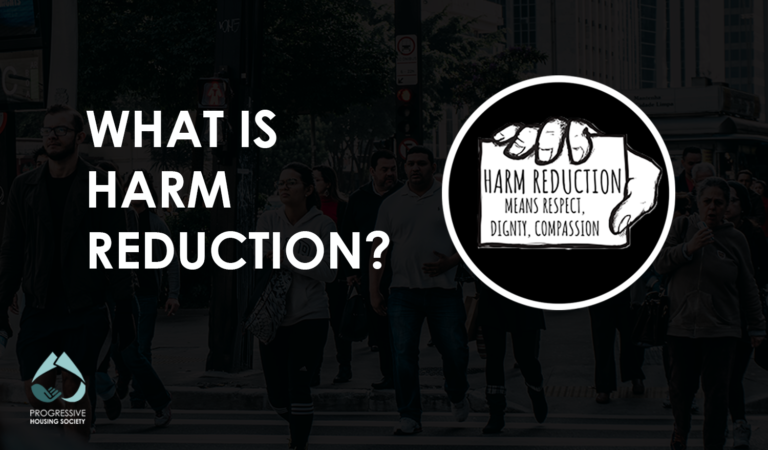Is Harm Reduction Cost Effective?
-
by
 PHS
PHS
Is harm reduction cost effective? Many people argue against harm reduction because they see it as spending a lot to provide services and equipment that is often seen as “enabling” risky behaviour. Research has proven over and over about the effectiveness of harm reduction programs and this effectiveness includes reducing long-term costs associated with health care.
Did you know that injecting drug use is estimated to be responsible for around 10% of HIV infections worldwide? According to World Health Organization, HIV prevalence worldwide among People Who Inject Drugs (PWID) is around 19%. Many countries especially in Asia and Eastern Europe have responded to injecting drug use through law enforcement measures and compulsory detention. There is no evidence to suggest that compulsory detention of people who use drugs is effective in reducing drug dependency or rehabilitative, as much detained people return to drug dependency after release.
An alternative approach is harm reduction, which refers to methods of reducing health risks as well as social and economic harms that individuals experience as a result of engaging in risky activities. Harm reduction principles and activities were developed to improve the health of people who use drugs. The model recognizes the many reasons why people use drugs and that some people can’t or may wish to discontinue using. More importantly, harm reduction aims to limit possible negative impacts of drug use, including the spread of infectious diseases, such as hepatitis C.
These programs help reduce stigma and have a higher success rate for reducing the spread of disease as well as aiding in overall recovery but are they cost-effective?
The Cost-Effectiveness of Harm Reduction
In the context of HIV prevention and injecting drug use, harm reduction generally includes needle-syringe programs and opioid substitution therapy. Although these programs don’t necessary reduce drug dependency, needle-syringe programs (NSPs) are public health measures which aim to reduce the spread of blood-borne infections, including HIV and HCV, among PWID through the distribution of new injecting equipment. Numerous studies have examined the effectiveness of harm reduction strategies. Each approach has clear evidence of impact on reducing drug dependency or reducing risk behaviours and ultimately averting HIV transmission (among other important benefits.)
A study by Wilson, Donald, Shattock and Fraser-Hurt (2015) indicates that NSPs are relatively cheap to implement. They found that the average cost of NSP provision has been estimated by The Joint United Nations Programme on HIV and AIDS (UNAIDS) to be US$23-71 per person per year depending on region of the world and delivery system. Given their relatively low costs and evidence of effectiveness, NSPs are recognized as one of the most cost-effective public health interventions ever funded. According to research, studies in numerous countries have repeatedly provided compelling evidence that NSPs are cost-effective both from societal and health sector perspectives.
Increasingly, evidence has found net financial benefits of NSPs across all regions and in high-and low-income settings. The study by Wilson et al. (2015) has found that NSPs are cost saving when compared to the life-time costs of HIV/AIDS antiretroviral treatment. It estimated that not only did NSPs reduce the incidence of HIV by up to 74% over a 10-year period in Australia but found that they were cost savings and had a return on investment of between $1.3 and $5.5 for every $1 invested.
Harm Reduction: A Low-Cost, High-Impact Set of Interventions
The need to improve health outcomes for PWID, including reducing the high and increasing rates of HIV (and HCV) transmission, remains an urgent task for health providers and governments across the world. Not only is there an ethical imperative to make harm reduction programs universally available, but in contrast to compulsory detention, these approaches are globally effective, represent good value for money and are often cost-saving, including their value to improving the health outcomes for PWID and the broader population.
At Progressive Housing Society, not only we support clients with housing needs, but we also help them with their basic needs and help them to live as independently as possible in the community. We could not do this without the support of the community. Giving is an act, not an amount. Every $1 donated goes to support someone struggling. Make a difference in your community and donate now!
References
Cost-Effectiveness of Harm Reduction Strategies . (2019 ). Retrieved from ontario harm reduction distribution program: http://www.ohrdp.ca/cost-effectiveness-of-harm-reduction-strategies/
Harm reduction . (2019). Retrieved from Canada’s source for HIV and hepatitis C information : https://www.catie.ca/en/practical-guides/hepc-in-depth/prevention-harm-reduction/harm-reduction
Wilson, D. P., Donald, B., Shattock, A. J., Wilson, D., & Fraser-Hurt, N. (2015). The cost-effectiveness of harm reduction. International Journal of Drug Policy.


